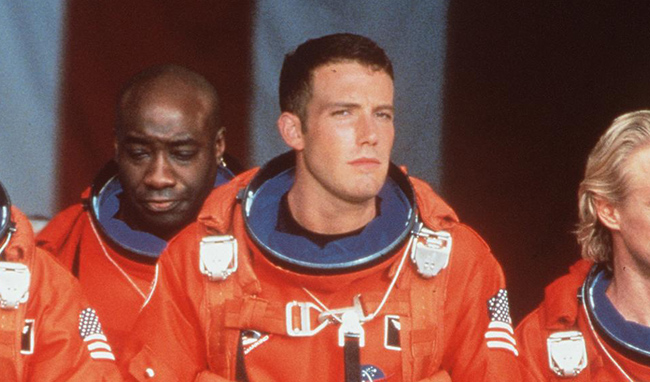
The summer of 1998 brought the American viewing public a pair of disaster films that will forever be associated with each other. Armageddon and Deep Impact both hit theaters with extremely similar concepts and changed the way moviegoers think about the end of the world. In short, it can come from space from really big rocks, unless mankind can get its sh*t together and stop it.
The themes are slightly different in each film, but it’s really hard to pry them apart 21 years later. And listen: there’s a long list of things that are wrong logically with the movies, especially Armageddon. Even Ben Affleck has hilariously explored those plot holes in the movie’s DVD commentary. But there are nuggets, or at least slight concepts in the films, that are at least scientifically inspired. But science has now given us a more official fallacy to address from the films.
Namely, that’s not how asteroids work.
According to CNN, researchers from Johns Hopkins University and the University of Maryland studied asteroids and their durability and say it would take a lot more force to blow them into pieces small enough to not destroy Earth than originally thought.
CNN’s report specifically mentions Armageddon and Deep Impact as movies where explosives are used to save the world by breaking up a large object in space. It also notes that Deep Impact deals with a comet, not an asteroid. But this is about more than just movies, as those are based on some real science that people take into consideration about potential Earth-destroying space objects.
“It may sound like science fiction but a great deal of research considers asteroid collisions,” El Mir said. “For example, if there’s an asteroid coming at earth, are we better off breaking it into small pieces, or nudging it to go a different direction? And if the latter, how much force should we hit it with to move it away without causing it to break?”
The threat of extinction from a space object colliding with Earth is certainly something a lot of other species without internet access couldn’t prevent, and according to scientists it’s not as easy as training oil drillers to be astronauts, creating a device to drill into the asteroid and blowing it into smaller bits. Mainly, it will take a lot more explosives.
The research suggests that previous simulations didn’t account for the slow speed of fractures within asteroids. Millions of cracks spread in the impacted asteroid, the scientists found, while parts of the rock “flowed like sand” and a crater developed.
However, when the impact of gravity on the dispersed fragments of the asteroid’s surface was examined over several hours, the researchers found that “gravitational reaccumulation” took place, meaning that the gravitational pull of the asteroid’s “large damaged core” drew the fragments back together.
In other words, even if Bruce Willis could wrangle some roughnecks into orbit and got the job done, the pieces of the “destroyed” asteroid could even pull itself back together. And while that would provide an interesting sequel of sorts, well, there probably wouldn’t be enough time to put together another mission to blow that asteroid up before impact killed us all.
Few people actually expect movies like Deep Impact or Armageddon to be lifelike at all, but the bigger point is that extinction threats from space are real, and how we’ve imagined potential solutions probably would not work. Which isn’t a great thought until you consider that, well, we as a race might beat a big rock from space to ruining things down here, anyway.
